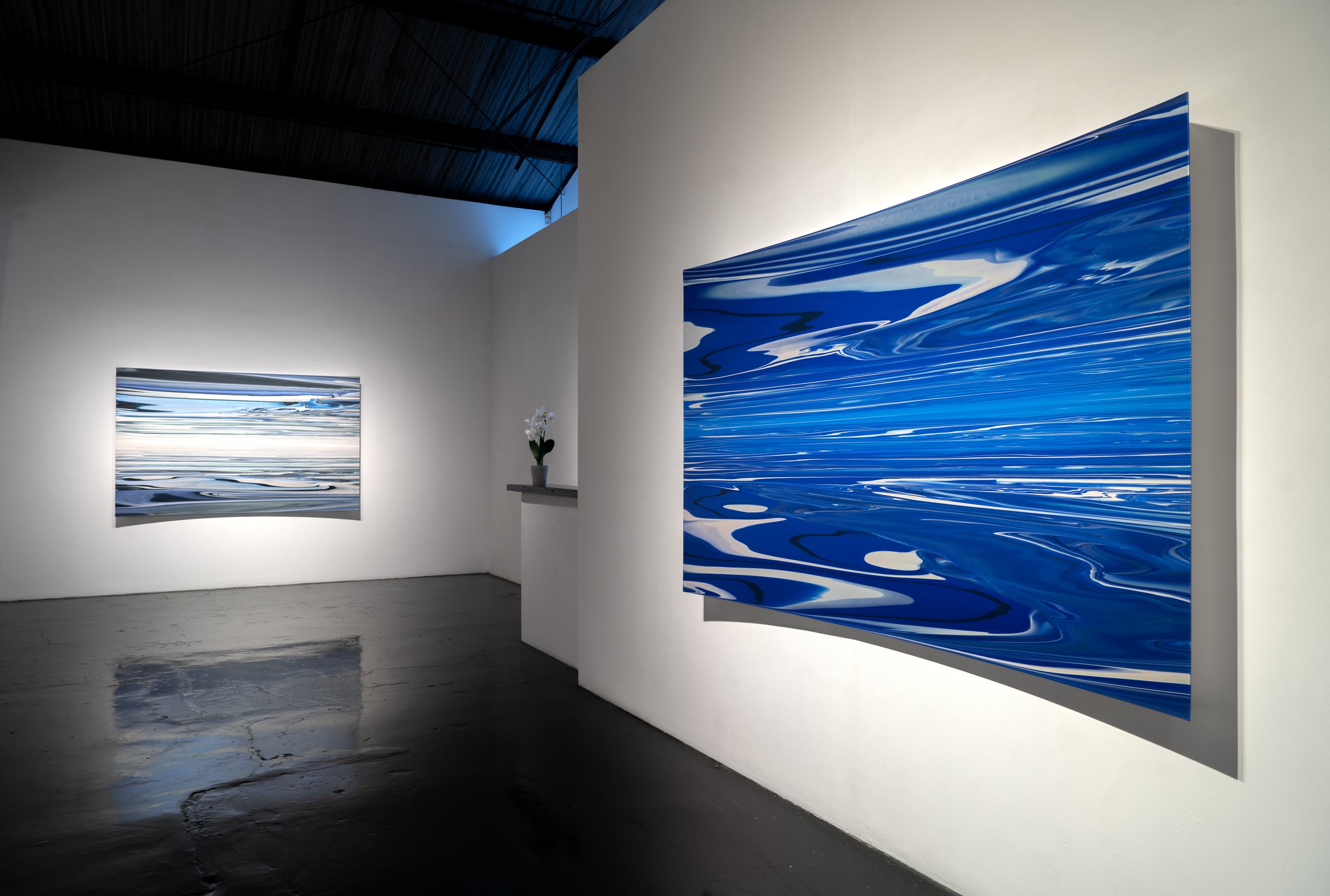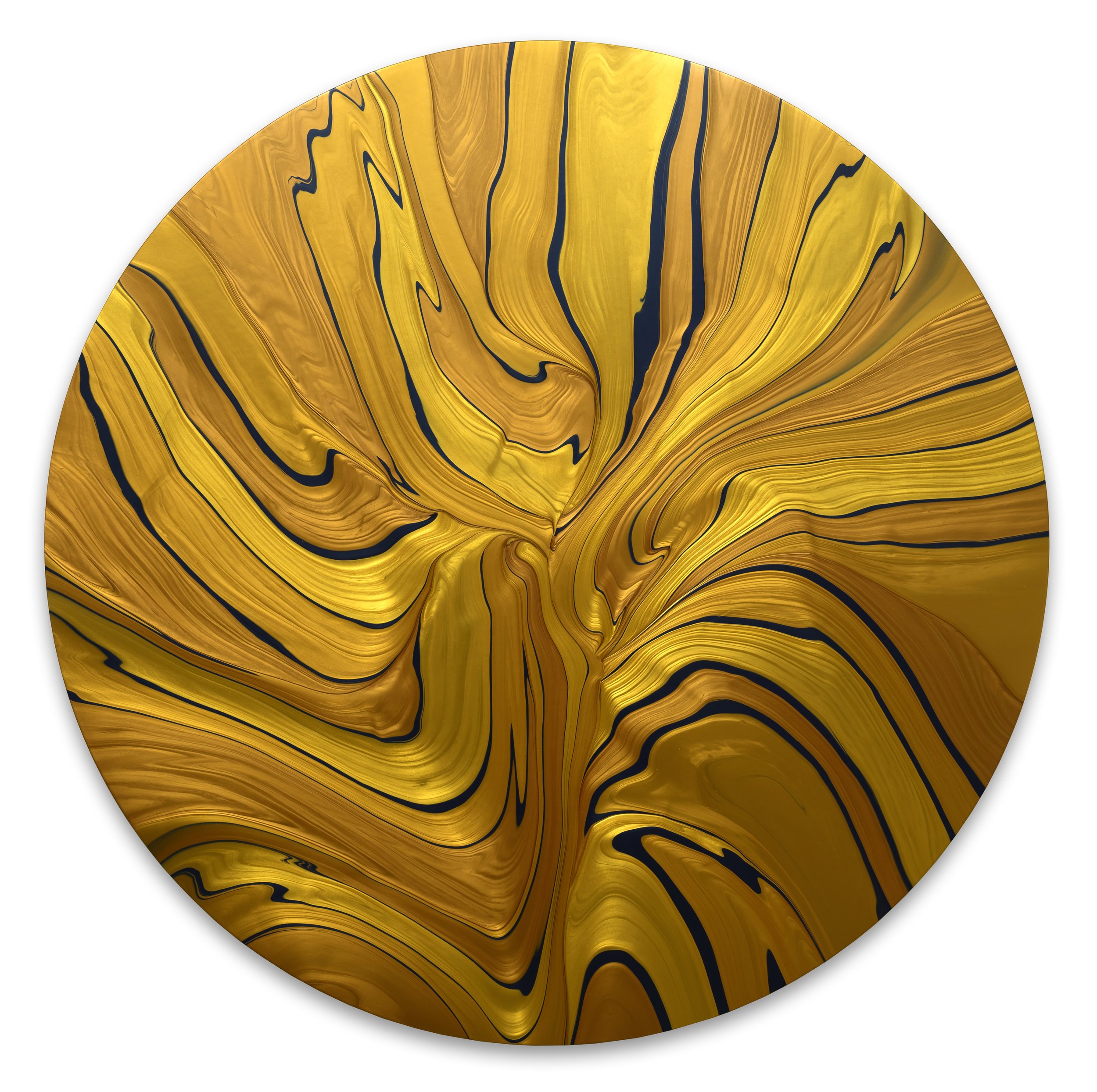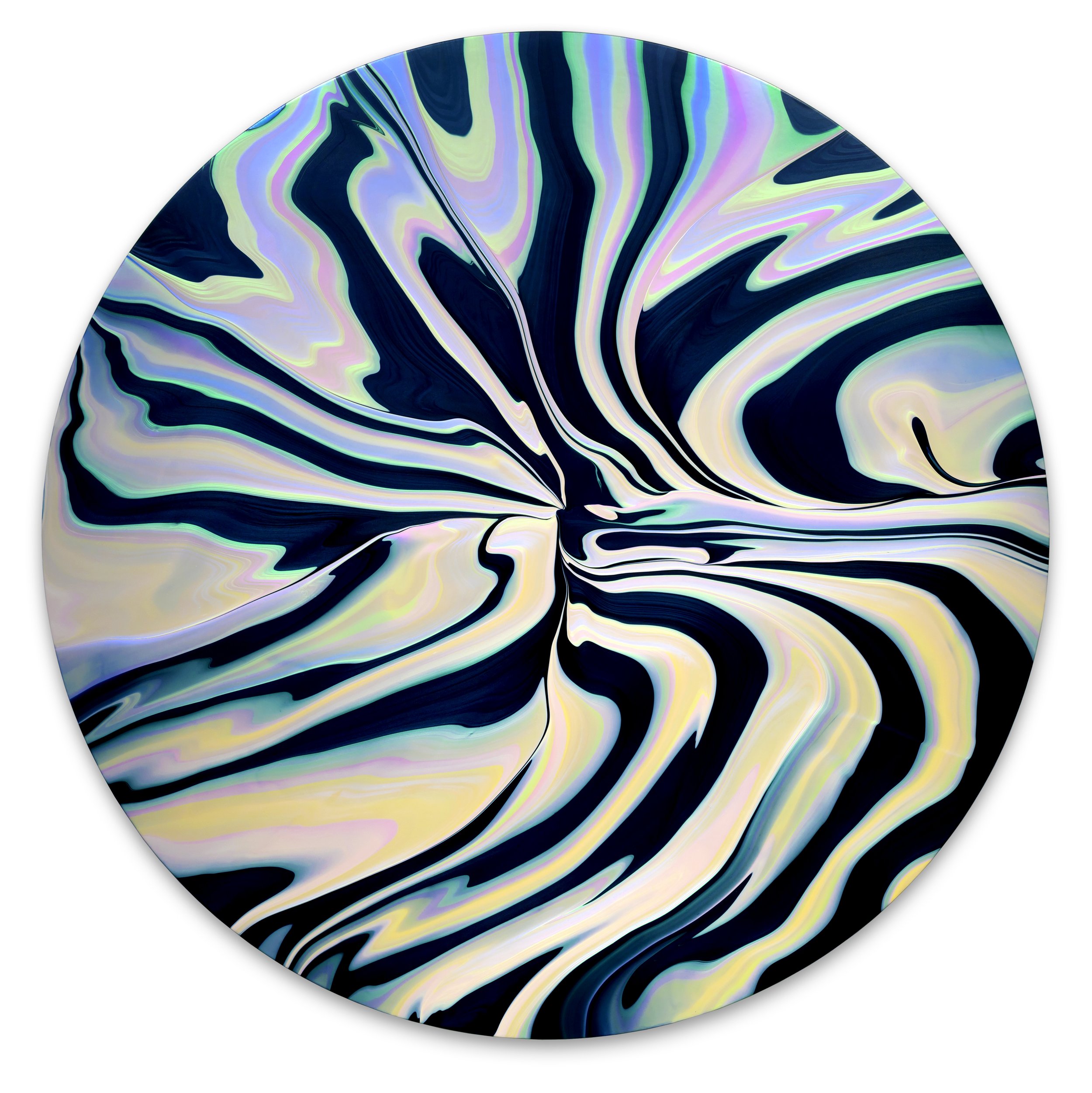ART REVIEW - White Hot Magazine / Andy Moses: Recent Paintings
/By LORIEN SUÁREZ-KANERVA September 11, 2023
Andy Moses’ Recent Paintings will be showcased at the William Turner Gallery in Los Angeles from September 9 until November 11, 2023. Moses Recent Paintings’ distinct color use encompasses a predominantly white, blue, black and gold palette. All-white color tints, shades, and their lustrous variability are at play amidst clear, sharper, fluid lines, and softer open gradations, leading toward ethereal spaces. Moses’s sensibility spans a buoyantly luminous subtlety and achieves a refined definition through a meticulously grounded and richly orchestrated embodied perception. Maurice Merleau-Ponty pointed to embodied perception as the experience of the self in an environment at the crucible towards forms of relatedness that reveal meaning and expand perception.
Geomorphology 1607, Acrylic on canvas, over concave wood panel, 57 x 90 inches, 2023
Fiber Birren, Johannes Itten, and Carl Jung address the subject of color each through a psychological vantage point, cultural nuances (like Jung’s groundbreaking study of mandalas of the East by introducing these to the West), and Color Theory. The sensorial effects of color suggest a responsive universality based on similarities that bridge cultural bounds. In his works “Color and Meaning” and “Color and Culture,” John Cage supports these observations on color's meaningful effect on sensorial understanding across cultures. Most salient in Moses’ works is the combination of white and blue, where black shifts through a reflective play with light toward shades of blue. From these earlier scholars' observations, colors such as whites speak of clarity, illumination, and spirituality, and blues inspire serene tranquility and introspective depth.
As a countertone, gold's earliest cultural associations with the sun's radiant power extend the hue's significance to encompass wealth and prominence. For Jung, gold represented the self's individuation process, stimulating wisdom and enlightenment—likewise, Itten and Birren associated illumination and divine inspiration with gold. Extensively, gold in East Asia, including Japanese 18th-century iconography, signifies wealth, power, good fortune, and divinity.
Geomorphology 1606, Acrylic on canvas over concave wood panel, 57 x 90 in, 2023
Moses shares the American Transcendentalists’ numinously intuitive perception of nature alongside the critical figures of Thoreau, Whitman, Emmerson, and their predecessor, the Canadian Henry Wadsworth Longfellow. Poetry such as Henry Wadsworth Longfellow’s lines from his poem “The Tide Rises, The Tide Falls” are evident in Moses’ paintings, and they highlight a kinship, reveling in transcendental sensibilities grounded in the human experience of nature and its patterns throughout time.
“The little waves, with their soft, white hands,
Efface the footprints in the sands.”
Geodesy 1514, Acrylic on canvas over circular wood panel, 72 in diameter, 2023
Longfellow summarizes this generational contribution towards a deepening receptiveness and recognition of how these contemplations become influential legacies in his poem “A Psalm of Life.”
“Lives of great men all remind us.
We can make our lives sublime,
And, departing, leave behind us
Footprints in the sands of time.”
Geodesy 1515, Acrylic on canvas over circular wood panel, 72 in diameter, 2023
Similarly, Moses perceived an affinity and kinship from the East with Ryukyuan lacquerware for its craftsmanship and conceptual design motif through his introduction while viewing LACMA’s “The Five Directions: Lacquer from the Ryukyu Islands” exhibition. This iconography and the craft itself of creating a painstaking layering of resin polished into lacquer was characteristic of Japan’s Ryukyu Islands from the 18th century. The motif speaks of benevolent mystical forms seeking wisdom in East Asian cultural iconography. One particular piece in LACMA’s exhibition, a circular tray, inspired his painting titled Geodesy 1515. The matter of the enlightenment is also poetically crafted as an adornment – Dragons Chasing the Flaming Pearl. The Flaming Pearl holds as its essence the themes of wisdom within a spiritual scope. At the same time, the dragons culturally appear as strong protective forms that control natural elements.
Circular Tray with Dragons Chasing a Flaming Pearl, Black Lacquer on Wood Core with Mother of Pearl Inlay, 3.5 x 35.25 in, Ryukyu Islands, 1700-1800, LACMA Permanent Collection.
The American transcendentalist ethos, presented in the poem “Come, said my soul” by Whitman, attests eloquently to their literary movements’ vision of universal unity. Their writings draw deeply from their dedicated contemplation and communion with nature. This is akin to the sensibility the mystics have shared throughout time.
Geomorphology 1608, Acrylic on canvas over concave wood panel, 57 x 90 in, 2023
“Come, said my soul,
Such verses for my body let us write, (for we are one,)
That should I after death invisibly return,
Or, long, long hence, in other sphere,
There to some group of mates the chants resuming,
(Tallying earth’s soil, trees, winds, tumultuous waves,)
Ever with pleas’d smile I may keep on, Ever and ever yet the verses
owning – as, first, I here and now,
Singing for soul and body, set to them by name,
Walt Whitman
Andy Moses’s paintings attest to this universal transcendence, poetically defined, and breathtakingly revealing its cultural lineage’s kinship. WM









